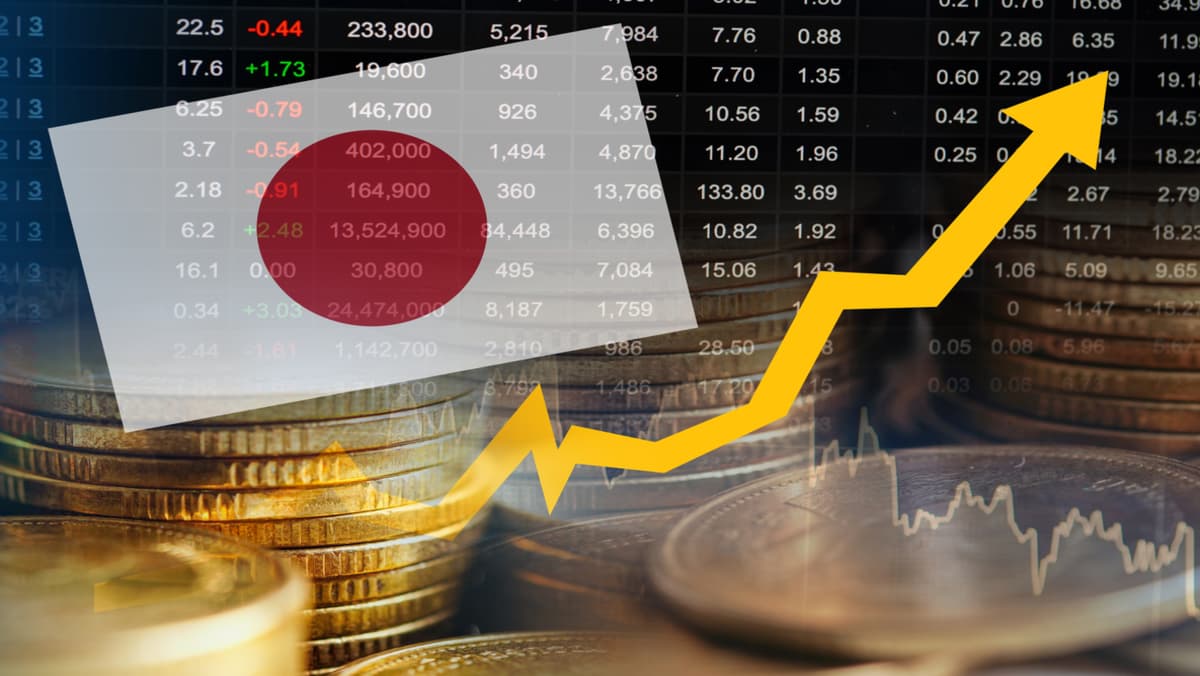
Les CFD sont des instruments complexes et sont accompagnés d’un risque élevé de pertes financières rapides en raison de l’effet de levier. 75,2 % des comptes d’investisseurs particuliers perdent de l’argent en tradant des CFD avec ce fournisseur. Vous devez déterminer si vous comprenez comment fonctionnent les CFD et si vous pouvez vous permettre de courir le risque élevé de perdre votre argent.
Lundi Aug 25 2025 06:27

6 min

Japan's Nikkei climbs: The Nikkei 225 index, representing Japan's leading companies, has recently shown upward momentum, attracting the attention of traders worldwide.
For those interested in capitalizing on this trend, understanding how to trade Nikkei 225 index CFDs (Contracts for Difference) effectively is essential. This article will explore the Nikkei 225, its significance, and strategies for trading CFDs based on this index.
Understanding the Nikkei 225 Index
The Nikkei 225 is one of the most prominent stock market indices in Asia, comprising 225 large publicly-owned companies listed on the Tokyo Stock Exchange. It serves as a barometer for the Japanese economy and is often used to gauge market sentiment in the region.
Composition and Weighting
The index includes a diverse range of sectors, such as technology, finance, and consumer goods. Each company within the index is weighted based on its stock price, meaning higher-priced stocks have a greater influence on the index's overall movement. This composition provides a snapshot of the Japanese economy's health and performance.
Economic Indicators
The performance of the Nikkei 225 is closely linked to various economic indicators, including GDP growth, inflation rates, and monetary policy decisions by the Bank of Japan. Understanding these factors can help traders anticipate potential movements in the index.
Why Trade Nikkei 225 Index CFDs?
Trading Nikkei 225 index CFDs offers several advantages for traders looking to benefit from market movements without directly purchasing underlying stocks.
Leverage
CFDs allow traders to use leverage, meaning they can control larger positions with a smaller amount of capital. This feature can amplify potential returns, making it appealing for those looking to maximize their trading experience.
Diverse Strategies
CFDs provide flexibility in trading strategies. Traders can go long if they believe the index will rise or short if they anticipate a decline. This versatility allows for various approaches based on market conditions.
No Ownership of Underlying Assets
With CFDs, traders do not own the underlying stocks within the index. Instead, they speculate on price movements, which can simplify the trading process. This structure can also reduce transaction costs associated with buying and selling individual stocks.
Setting Up for Trading
Before diving into trading Nikkei 225 index CFDs, it's crucial to establish a solid foundation.
Choosing a Broker
Selecting a reliable broker is the first step. Look for a platform that offers competitive spreads, a user-friendly interface, and robust customer support. Ensure that the broker provides access to the Nikkei 225 index and offers leverage options that align with your trading strategy.
Creating a Trading Plan
A well-defined trading plan is essential for navigating the markets effectively. This plan should outline your trading goals, risk tolerance, and preferred strategies. Consider incorporating entry and exit points, as well as stop-loss and take-profit levels, to manage your trades effectively.
Analyzing Market Conditions
Successful trading hinges on understanding market conditions and how they influence the Nikkei 225 index.
Fundamental Analysis
Keep abreast of economic news and reports related to Japan. Key indicators such as employment figures, inflation data, and central bank announcements can impact market sentiment. Economic reports can provide insights into potential movements in the index.
Sentiment Analysis
Market sentiment can significantly influence the Nikkei 225. Monitoring news articles, social media discussions, and investor sentiment can offer valuable insights into how traders perceive the market. Understanding sentiment can help inform your trading decisions.
Technical Indicators
While technical analysis will not be extensively covered, it plays a vital role in trading CFDs. Traders often use chart patterns, moving averages, and other indicators to identify potential entry and exit points. Familiarize yourself with various technical tools to enhance your analysis.
Developing a Trading Strategy
Once you’ve established your foundation and analyzed the market, it’s time to develop a trading strategy tailored to the Nikkei 225.
Day Trading
Day trading involves executing multiple trades within a single day, capitalizing on short-term price movements. This strategy requires a keen understanding of market dynamics and quick decision-making. Traders often use real-time data and technical indicators to identify opportunities.
Swing Trading
Swing trading focuses on capturing price movements over several days or weeks. This strategy allows traders to take advantage of larger price swings while avoiding the stress of day trading. Swing traders typically rely on technical analysis and market trends to make informed decisions.
Long-Term Investing
For those with a more extended investment horizon, long-term trading can be a viable option. This strategy involves holding positions for months or even years, aiming to benefit from overall market growth. Long-term traders should focus on fundamental analysis and broader economic trends.
Risk Management
Effective risk management is crucial when trading Nikkei 225 index CFDs. Implementing strategies to protect your capital can help mitigate potential losses.
Setting Stop-Loss Orders
Stop-loss orders automatically close a position when it reaches a predetermined price level. This feature helps limit losses and can be particularly useful in volatile markets. Determine your risk tolerance and set stop-loss levels accordingly.
Position Sizing
Calculating the appropriate position size for each trade is essential. Consider your account balance and risk tolerance when determining how much capital to allocate to each trade. This approach helps prevent overexposure to any single position.
Diversification
Diversifying your trading portfolio can reduce risk. Consider incorporating different asset classes or trading strategies to spread your risk across various markets. Diversification can help mitigate potential losses from a single trade or market downturn.
Monitoring and Adjusting Trades
After executing trades, ongoing monitoring is essential. Market conditions can change rapidly, and being aware of these shifts can help you make informed decisions.
Regular Review
Regularly review your trades and performance to identify what works and what doesn’t. Analyzing your trading history can provide insights into your strengths and weaknesses, allowing you to refine your strategies over time.
Adapting to Market Changes
Be prepared to adjust your trading strategy based on market conditions. Economic developments, geopolitical events, and changes in market sentiment can all impact the Nikkei 225. Staying informed and flexible will enhance your ability to navigate the markets effectively.
Conclusion
Trading Nikkei 225 index CFDs can be a rewarding endeavor for those willing to invest the time and effort in understanding market dynamics. By choosing a reputable broker, developing a solid trading plan, and employing effective risk management strategies, traders can position themselves for potential success. Whether you opt for day trading, swing trading, or long-term investing, the key lies in staying informed and adapting to market conditions. With the right approach, you can effectively navigate the complexities of the Nikkei 225 index and seize the opportunities it presents.
Avertissement sur les risques : cet article ne reflète que les opinions de l'auteur et est fourni à titre indicatif uniquement. Il ne constitue en aucun cas un conseil en investissement ou une recommandation financière, ni ne représente la position de la plateforme Markets.com.Lorsque vous envisagez de négocier des actions, des indices, des devises et des matières premières ou de faire des prévisions de prix, n'oubliez pas que le trading CFD comporte un degré de risque important et peut entraîner une perte de capital.Les performances passées ne sont pas indicatives des résultats futurs. Ces informations sont fournies à titre informatif uniquement et ne doivent pas être interprétées comme servant de conseils d'investissement. Le trading de CFD et de spreads bets sur les crypto-monnaies est restreint au Royaume-Uni pour tous les clients particuliers.